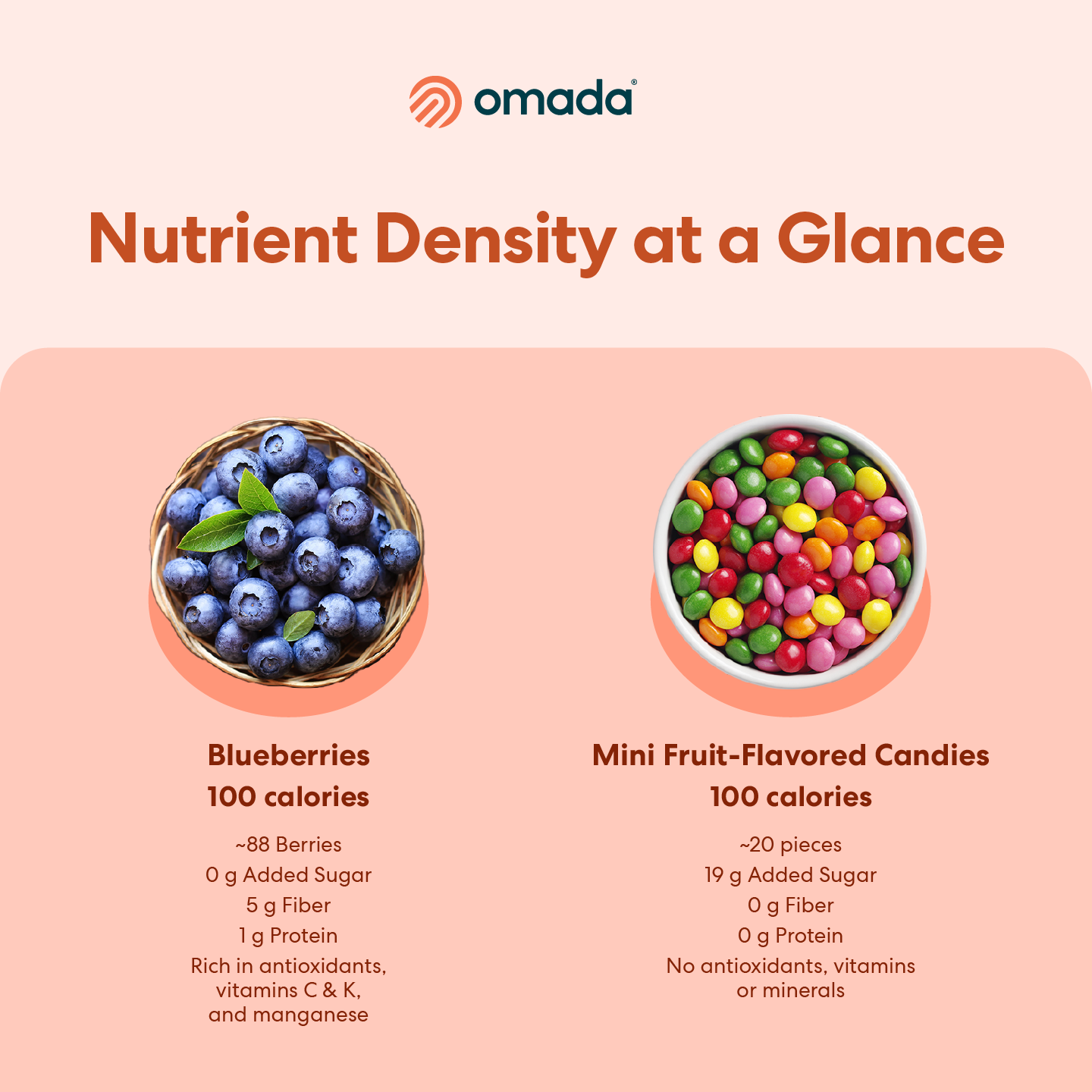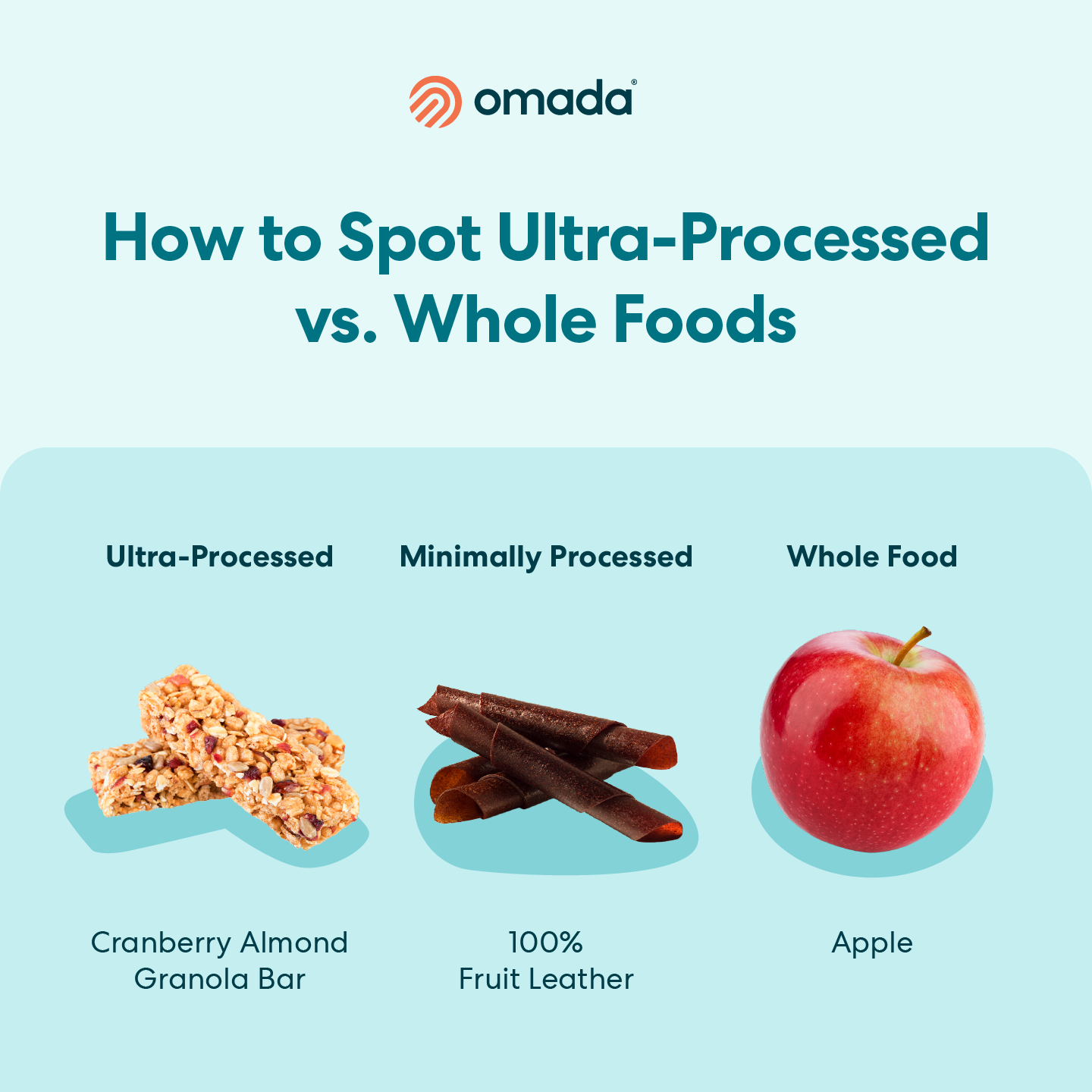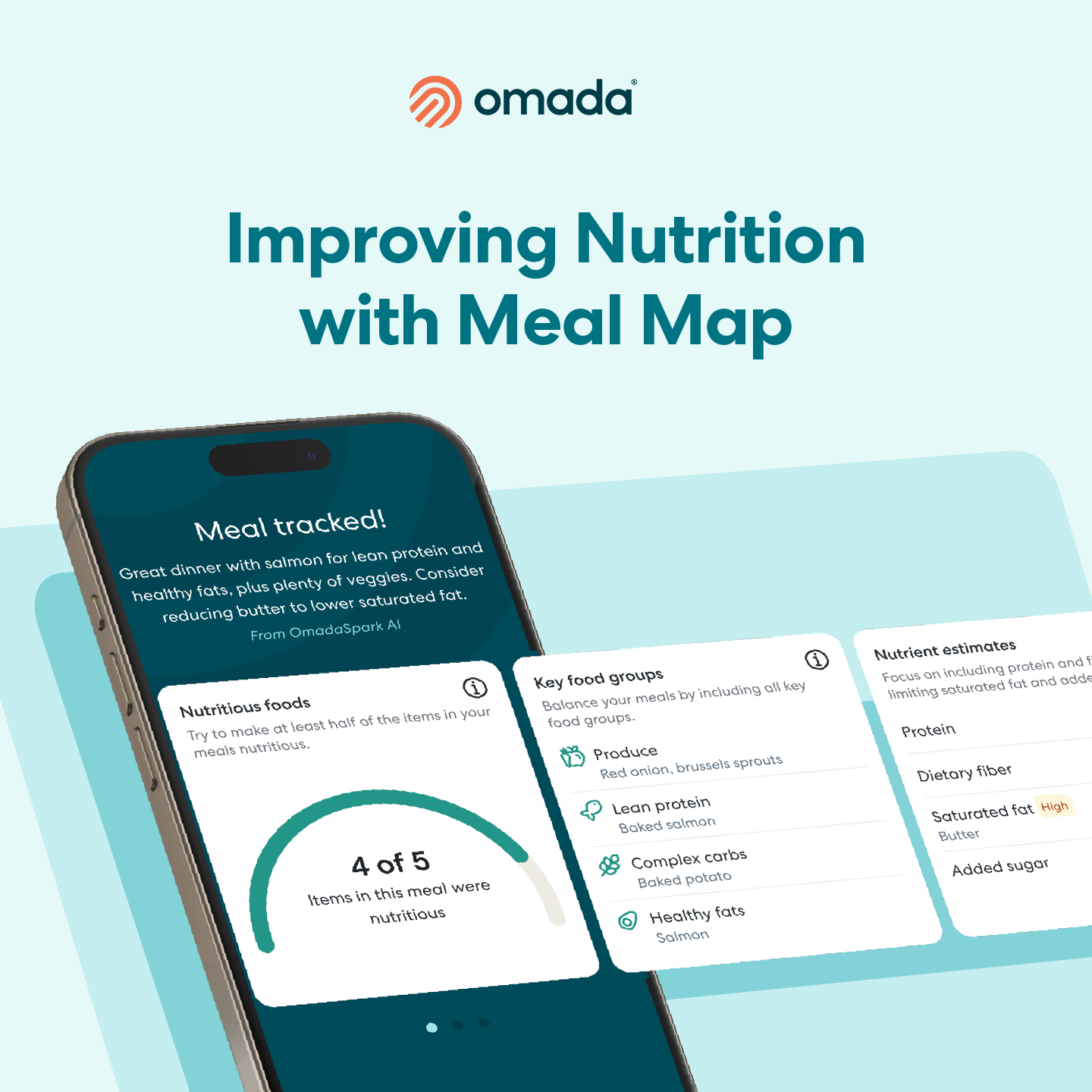Calories or Nutrients? What Really Counts for Cardiometabolic Health

By Alison Megliola, MS, RD, CDCES
This edition covers:
- Why a smaller body doesn’t always mean a healthier body
- The problem with calorie counting
- Promoting cardiometabolic health through nutrient-dense eating
Nutrition is complex. Fad diets are rampant. Food labeling is manipulative, despite the FTC and FDA’s best efforts. Though efforts have been made to remedy these challenges through decades of research and policy recommendations, here we are: still confused about how to nourish our bodies and remain healthy at the same time. Seems counterintuitive, doesn’t it?
Overconsumption has become normalized, with a myriad options of processed foods, trendy restaurants, predatory food marketing, and a dearth of clinically backed nutrition education and tools, all feeding America’s obesity epidemic. An often stated solution is simply “eat fewer calories,” whether through weight loss medications or behavior change.
While calorie counting to achieve a calorie deficit can ultimately lead to a smaller body, it doesn’t always result in a healthier body.
For people managing obesity, reaching an individualized healthy weight is proven to reduce the risk of cardiometabolic conditions like diabetes, hypertension and high cholesterol—but these health benefits are not sustainable without proper nutrition. In this article, we’ll dive into the approaches of calorie counting vs. nutritional density, and how the latter is best suited to facilitate meaningful health outcomes.
Calorie Counting: An Unsustainable Approach
For decades, calorie counting has been promoted as the go-to method for weight loss; and it’s true, literature supports eating in a calorie deficit as the standard method for losing weight. Most weight loss research explores various types of diets with calorie counting as the tool to achieve a calorie deficit. But research also tells us that after following a low-calorie diet, only a quarter of patients maintain that weight loss.
A numbers game vs. a focus on health
Calorie counting alone may fail to teach the importance of balanced, nutritious meals, leading some to choose low-calorie yet nutrient-sparse foods. The belief that “a calorie is a calorie” can make eating become a numbers game rather than a focus on health.
For example, choosing a 100-calorie bag of pretzels and a 150-calorie granola bar might seem like a great way to stay under 300 calories for lunch, but opting for the 500-calorie salad with beans, almonds, and an olive oil dressing will provide markedly more nutrients, not to mention enhance satiety. Pretzels and a granola bar may or may not get you through until dinnertime, but they’re certainly not providing your body with the nutrients it needs.
Promoting unhealthy relationships with food
Calorie counting can also foster an unhealthy relationship with food, encouraging unhealthy decisions, like skipping dinner because you’ve already exceeded your calorie limit for the day. The rigid nature of calorie counting could provoke eating disorder tendencies for individuals who have an eating disorder or are susceptible to one.
Nutrient Density: A Positive Path to Healthy Eating
What does nutrient density mean?
Nutrient density is a measure of nutrients per calorie. In other words, focusing on nutrient-dense foods helps optimize the nutritional value consumed, ensuring we get the most health benefits for our calorie investment.
Nutrient-dense foods are those packed with essential nutrients relative to their calorie content. They include fruits, vegetables, whole grains, lean meats and poultry, seafood and fish, beans and legumes, nuts and seeds—foods that nature provides in its most unaltered forms.
In contrast, calorie-dense items often provide energy in the form of sugars and fats with little nutritive value, found most commonly in ultra-processed foods like chips, soda, candy, and packaged baked goods.

Calorie quality over quantity
Rather than the age-old practice of calorie counting, prioritizing nutrient-dense foods emphasizes the quality of the calories consumed, aiming for a diet rich in vitamins, minerals, and other beneficial compounds, like phytochemicals.
Attention on nutrient density shifts the focus toward a more hopeful and holistic pathway to health, especially regarding weight loss. This approach not only aids in weight management, but also fosters overall health improvement, providing a more sustainable and (hopefully) enjoyable means of achieving one's health goals.
Think of it as adding nutrition versus subtracting calories.
Benefits of a Nutrient-Dense Diet
Reduces the risk of chronic diseases
Although there is a strong correlation between obesity and chronic disease risk, we must look beyond just weight and weight loss to reduce risk. The focus on calorie counting is specifically for weight loss, however eating styles such as the Mediterranean diet that focus on nutrient-dense foods demonstrate benefits to overall health without weight loss as the primary goal. Research has shown that a diet rich in nutrient-dense foods can help reduce the risk of chronic diseases such as heart disease and diabetes, while promoting overall health and longevity.
Encourages positive relationships with food
Focusing on nutrient density over calorie counting could encourage a more positive and sustainable relationship with food. This dietary shift aims to nourish the body optimally, ensuring a full range of micronutrients and macronutrients while naturally facilitating weight management.
A JAMA study from 2018 shows that regardless of diet type (low-carb vs low-fat), focusing on nutrient quality and no prescribed calorie counts leads to weight loss.
Promotes an inclusive mindset
While traditional dieting and calorie counting are all about exclusion, e.g. removing certain macronutrients like carbohydrates, a nutrient-dense strategy is flexible and can be applied to those with dietary allergies, intolerances, or conditions. It also honors all cultural backgrounds, incorporates food preferences, eating behaviors, and food accessibility.
Nutrient-dense foods can be fresh from the farmer’s market, or canned, frozen and bought in bulk, accounting for different geographical and socioeconomic scenarios.
Facilitates satiety without overeating
One standout aspect of adopting a nutrient-dense diet is that it could displace calorie-laden, hyper-palatable, ultra-processed foods, naturally leading to a reduction in calories, without consciously counting them. Studies show that diets high in ultra-processed foods lead to overeating, while nutrient-dense foods are typically higher in fiber, protein, and healthy fats, which are filling, satiating, and satisfying. Fruits and vegetables are also low in calories, which can be eaten in greater volumes and result in satiety without excessive calorie intake.
Navigating a Nutrient-Dense Lifestyle
You might be thinking, “where has this nutrient density approach been all our lives?”
It’s actually been hiding in plain sight—but the majority of Americans don’t know where to look. There are at least a dozen clinically backed nutrient density tools in existence, yet they are all used for research or policy, and not for American consumers to make informed decisions about what they’re eating. In contrast, the French government implemented Nutri-score to help European consumers make informed decisions about the nutrient quality of their groceries, by actively placing nutrient scores on food labels.
So how can Americans choose nutrient-dense foods in an environment that promotes overconsumption of ultra-processed foods?
Progress over perfection
Transitioning to a nutrient-dense diet isn't about an overhaul but a gradual integration of small, meaningful changes. It’s progress, not perfection. Individuals can start by substituting ultra-processed snacks with less-processed snacks and eventually whole foods like fresh fruits and nuts. They can try incorporating more leafy greens into meals, even to breakfast by adding chopped spinach to scrambled eggs, selecting whole grains over refined versions, and opting for lean cuts over more marbled cuts of meat.

Education and empowerment
Education plays a crucial role in the transition to a nutrient-dense lifestyle. Empowering individuals with knowledge about reading food labels, understanding nutrient content, and recognizing sources of key vitamins and minerals emboldens them to make informed, mindful choices.
That’s why Omada built Meal Map: an educational nutrient-categorization tool developed by registered dietitians, rooted in science, to not only help members eat healthier, but gain a deep understanding of nutrition and how to take small steps towards achieving their health goals.

Cardiometabolic Health Extends Beyond the Scale
Focusing on nutrient density contributes to a richer understanding of how foods impact health, whereas calorie counting is a rigid tool designed for achieving weight loss. A diet rich in diverse, nutrient-dense foods supports a robust immune system, boosts energy levels, improves digestive health, and reduces the risk of cardiovascular diseases such as stroke and diabetes, as well as certain cancers.
As a dietitian, I’ve also found that when people anchor on nutrient density, they end up reducing their daily calories without even noticing/trying and subsequently lose weight without ever obsessing over the numbers.
In a culture hyper-focused on thinness above all else, moving away from calorie counting and emphasizing nutrient-dense choices, especially when taking weight-loss medications, can help individuals attain holistic health without the psychological toll of traditional dieting.
Providing people with clinically driven, easy-to-use tools to enable a nutrient-dense lifestyle will ultimately contribute to a healthier population and bend the curve on chronic disease.



